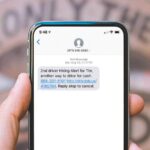As technology advances, the rate of fraudulent calls has skyrocketed, with robocalls playing a major role in this surge. The Senate is introducing bills to combat robocalling, and many carriers and app developers have created “scam likely” caller ID tools to identify these calls and even block them. But if you use any type of dialer, your number could be incorrectly marked as “scam likely,” reducing the number of customers you reach.
What is “Scam Likely” and How Do Numbers Get Flagged?
“Scam likely” is a flag assigned to phone numbers by carriers to indicate that they are suspected of making fraudulent robocalls or spamming. Carriers use different thresholds to monitor call activity, and if a number makes too many outbound calls, it may be assigned a flag score, indicating that it is likely robocalling. Also, consumers manually flag numbers as spam risk through call blocking apps. If your number gets multiple blocks, they may label it as either a “nuisance call,” “spam call,” or “scam likely.”
Carriers flagging numbers
In recent years, carriers have been taking measures to combat phone scams and spam calls by flagging suspicious numbers. When a carrier flags a number, it means that the number has been identified as potentially harmful, and the carrier may take various actions to prevent that number from reaching their customers.
Carriers use advanced algorithms to identify numbers that may be involved in illegal activities such as fraud, phishing, and spamming. These algorithms analyze call patterns, frequency, and origin to determine which numbers should be flagged. Once a number is flagged, the carrier may take actions such as blocking or labeling it as “spam likely” to prevent their customers from receiving unwanted calls.
While the goal of flagging numbers is to protect customers from scams and spam, it can also have unintended consequences for businesses. Small businesses that rely on phone communication to reach their customers may find themselves unable to connect with potential clients if their numbers are flagged. This can lead to a loss of revenue and damage to the business’s reputation.
To avoid having their numbers flagged, businesses can take steps such as ensuring they have proper consent to contact customers, avoiding repetitive or unsolicited calls, and using reputable calling platforms that comply with industry standards. Additionally, businesses can work with their carrier to resolve any issues and have their numbers unflagged if they believe they have been flagged in error.
Overall, while the practice of flagging numbers is intended to protect customers, it can have negative consequences for businesses. As such, it is important for businesses to be aware of the potential impact and take steps to prevent their numbers from being flagged.
Consumers flagging numbers
Consumers can also flag phone numbers that they believe are spam or fraudulent. This is usually done through call blocking or reporting features on their phone or carrier. In recent years, there has been a rise in robocalls and phone scams targeting consumers, leading to an increase in the use of these features.
When consumers flag a number, it can have a significant impact on the business using that number. If the number is flagged by a large number of consumers, it can be added to a blacklist, which will prevent the number from being able to make outbound calls or send messages to those consumers. This can lead to a loss of potential customers and revenue for the business.
Additionally, if a business is repeatedly flagged by consumers for spam or fraud, it can damage the company’s reputation and credibility. Consumers are becoming more aware of phone scams and are increasingly cautious when answering calls or responding to messages from unknown numbers. If a business is associated with spam or fraud, it can deter potential customers from engaging with the company.
To avoid being flagged by consumers, businesses can take steps to ensure that their communications are compliant with relevant regulations and best practices. This includes obtaining proper consent before sending messages or making calls, providing clear opt-out options, and ensuring that their messaging is relevant and useful to the recipient.
In conclusion, consumers flagging numbers can have a significant impact on businesses using those numbers. It is important for businesses to take steps to avoid being flagged, and to ensure that their communications are compliant and relevant to their audience. By doing so, they can maintain their reputation and credibility, and avoid potential revenue losses.
How Do Flagged Numbers Affect Your Business?
If your numbers are flagged as “scam likely,” your answer rates will decrease, causing you to make more calls to reach a prospect and costing your business money. Moreover, this could hurt your customer experience and lower your brand’s trust.
Flagged numbers can significantly impact a business. When a number is flagged, it may be marked as a spam or telemarketing call, leading to it being blocked or sent directly to voicemail. This can result in missed opportunities to connect with potential customers or important business contacts. Additionally, if a business’s number is flagged, it can damage their reputation and lead to a decrease in trust from customers. Therefore, it is essential for businesses to ensure their calling practices comply with regulations and avoid behavior that may trigger a flag on their number.
How to Avoid Flagged Numbers and Maximize Your Call Reach
The best way to avoid flagged numbers is by ensuring that you use a properly configured dialer, such as a predictive dialer, and that you use ethical scripts when dealing with prospects. Swapping out your direct inward dial (DID) numbers throughout the day can also help reduce the carrier flag over time. It is also essential to understand your carrier’s policy and thresholds for monitoring call activity to avoid triggering a flag score. Additionally, it is advisable to get feedback from customers to determine whether they are flagging your numbers manually and take appropriate measures to address their concerns.
In conclusion, avoiding flagged numbers requires proper dialing practices and a better understanding of carrier policies. The best approach is to use ethical practices when communicating with prospects and swap out DIDs throughout the day. Doing this will help you avoid losing customers’ trust and maximize your call reach, leading to better business performance.



